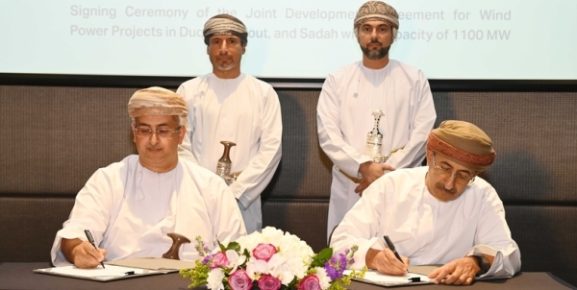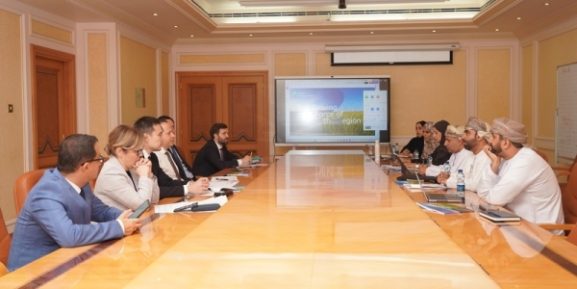26 New Mining Licences Granted: What This Growth Means for Investors and Entrepreneurs in Oman
MUSCAT, JULY 15 — In a pivotal year for Oman’s minerals sector, the Ministry of Energy and Minerals issued 26 new mining licenses in 2024 and celebrated the commencement of commercial copper exports. This milestone represents a significant advancement in the Sultanate’s efforts to diversify its economy as part of the Vision 2040 initiative.
According to the Ministry’s annual report for 2024, the government granted 14 permanent mining licenses and 12 exploration licenses across key governorates including Dhofar, Al Wusta, North Al Sharqiyah, Al Batinah, and Al Dhahirah. These licenses encompass a wide range of resources, such as gypsum, limestone, chromite, copper, iron ore, marble, and various construction materials. Additionally, the Ministry renewed 10 mining licenses and one exploration license, ensuring continuity for ongoing operations while also inviting new market participants.
Significant developments in copper mining emerged as two strategic projects began production and exports. The Al Ghuzayn Copper Project in Al Khaboura commenced commercial operations in 2024, backed by an initial investment of RO 43 million. Developed by Mawarid Mining, the project aims to extract six million tonnes of copper ore over six and a half years. Following the successful production and export of its first copper shipments, the company issued sales invoices and official export certificates, marking Oman’s re-entry into the global copper market. Notably, the project is set to create 50 direct jobs for Omani nationals and will allocate one percent of its annual output to support local community development, in adherence to Oman’s Mineral Wealth Law.
In the Wilayat of Al Mudhaibi, the Wash-hi Copper Project achieved a significant milestone with the initiation of copper concentrate exports. This site is estimated to contain reserves of 16 million tonnes and can produce high-quality copper concentrate with a purity of 24 percent. Officials noted this development as a strong indicator of increased investor confidence in Oman’s mineral resources, particularly in base metals.
Despite facing challenges, including production reporting delays from several operators, Oman’s overall mineral output for 2024 remained substantial, totaling 67.7 million tonnes—though this reflects a 14 percent decrease compared to the previous year. Of this total, 62.5 million tonnes were sold, generating revenues of RO 114.3 million. Export volumes reached 35.9 million tonnes, with gypsum making up the largest share at 12.4 million tonnes (35 percent of total exports). Limestone exports saw a significant increase of 49 percent, totaling 7.4 million tonnes, while exports of raw construction materials decreased by 39 percent. Importantly, 2024 marked the first commercial copper exports from Oman, with 24,000 tonnes shipped to international markets.
Alongside licensing activities, the Ministry finalized several long-term concession agreements aimed at promoting industrial-scale mining development. Notable agreements included Area 22-D in North Al Sharqiyah, awarded to Al Tamman Indsil Ferrochrome Company; Area 51-K, granted to Naqa Salt Company; and Area 11-A, signed with Al Tasnim Gulf Potash. These agreements underscore Oman’s commitment to attracting responsible investment in mineral development while encouraging downstream processing and value-added industries to localize production chains.
By the end of 2024, ten companies were operational across 21 designated mining concession areas in the Sultanate, which contain commercially viable reserves of copper, chrome, laterite, potash, dolomite, gypsum, limestone, nickel, and cobalt. The Ministry is also promoting digital transformation within the sector, having launched an online bidding platform to ensure transparency in access to mineral blocks and streamline application evaluations for potential investors.
In terms of workforce statistics, the mining sector employed 3,942 workers in 2024, including 890 Omani nationals, resulting in an Omanisation rate of 23 percent. The Ministry has expressed its intention to increase this figure by enhancing workforce development and supporting national capacity-building initiatives in mining engineering, geology, and environmental management.
Special Analysis by Omanet | Navigate Oman’s Market
The recent issuance of 26 new mining licenses and the initiation of commercial copper exports in Oman represents a pivotal move towards economic diversification under Vision 2040. This presents strategic opportunities for businesses, particularly those in the mining and raw materials sectors, emphasizing the importance of investing in local production chains to capitalize on the burgeoning mining landscape. Smart investors should now focus on Long-term concession agreements and training initiatives to align with the government’s vision for sustainable growth and increased Omani employment in the sector.



